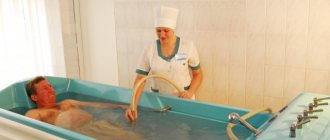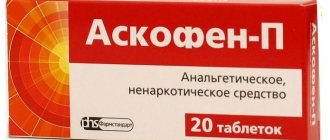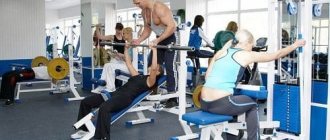An increasing number of people are experiencing high blood pressure – approximately every 3rd adult. How can training help with this? Important translation from Zozhnik.
Data from the current and ongoing NHANE study: 85.7 million US residents aged 20 years and older have hypertension - this is 34% of the adult population. Available statistical data for Russia indicate that at least 40% of our population suffers from hypertension.
Moreover, hypertension now occurs even in children. According to guidelines released by the American Academy of Pediatrics in September 2020, 3.5% of current U.S. children and adolescents have hypertension. In the absence of rare diseases such as pheochromocytoma or renal failure, children should not have hypertension.
Things only get worse from there. The Framingham Heart Study identified the risk of developing hypertension in approximately 1,300 subjects aged 55 to 65 years who did not have high blood pressure at the time of follow-up: more than half of participants aged 55 years and about two-thirds of participants aged 65 years developed hypertension in over the next 10 years. The authors concluded that “ the lifetime risk of developing hypertension in middle-aged and elderly people is 90%!” "
The situation is truly discouraging. The data obtained indicate that upon reaching retirement age, hypertension is practically guaranteed. The prognosis is extremely unpleasant, since the presence of hypertension significantly increases the risk of developing serious complications, such as kidney failure, stroke, and heart disease.
Improved medical advice on the role of exercise is needed
So why are we talking about an “epidemic” of hypertension? Are our doctors letting us down? Obviously, doctors can easily identify this condition: survey results from 2000 show that hypertension is the most common diagnosis during an in-person doctor's visit (total number of visits examined in the United States was 35 million).
However, we are talking about practical advice regarding exercise; doctors are clearly not doing everything in their power. What is meant here is the recommendation “You need to exercise more. I instruct you to walk 30-45 minutes a day, 5 days a week, and please start today.”
It’s sad to realize that such a conversation is a rare occurrence in medical practice. Doctors simply don't have the knowledge to give advice about exercise. It’s much easier to write out the required prescription and give a piece of paper with recommendations for yourself to review.
Can regular exercise prevent the development of hypertension?
- A long-term study of Harvard University graduates by Dr. Ralph Paffenbarger found that subjects who did not participate in vigorous exercise were 35% more likely to develop hypertension than those who exercised regularly. No less significant is another conclusion: it was intense training, and not training at an easy pace, that reduced the risk of developing hypertension throughout life . In this case, “intensive” training included running, swimming, handball, skiing competitions, etc.
- A study of Japanese men found that walking for 20 minutes daily reduced the risk of future hypertension .
- More recent data suggest that active recreation of at least 4 hours per week reduces the risk of hypertension by 19% .
Although the above may not apply to everyone, chances are good that regular exercise can actually prevent the development of hypertension.
Normal blood pressure levels after exercise
Normally, during sports or physical labor, the maximum pressure can rise to supply the muscles with blood is 140/90 mmHg. The natural mechanism involves its reduction within an hour to normal values. If this does not happen, other organs suffer from a lack of blood and oxygen, because the arteries that go to them are spasmed.
An important indicator of pressure after, for example, running, are the conditions under which the sport took place. The pressure may rise slightly above the permissible level if:
- the person was not ready for the workout and started it without warming up;
- increased ambient temperature;
- breathing problems during exercise;
- heart or vascular disease.
It is worth remembering that you need to prepare for each workout.
"Normal" blood pressure
For many years, optimal blood pressure was considered to be 120/80 (systolic/diastolic). Medicines were prescribed for blood pressure of 140/90 and higher.
When conducting the study, scientists calculated that with an increase in pressure from 115/75 to 185/115 mm Hg. Art. Each unit increase of 20/10 doubles the risk of cardiovascular complications such as heart attack (myocardial infarction), heart failure, stroke and kidney disease.
People who engage in aerobic exercise tend to have lower resting blood pressure than those who are less physically fit . This is not harmful and is not unusual. Improving adaptability to aerobic exercise leads to improved functioning of the circulatory system: the heart becomes stronger, it pumps more blood with each beat, and the body receives more oxygen from the blood.
A trained athlete consumes more oxygen than a sedentary person. The increased output of blood with each heartbeat, combined with higher oxygen consumption, results in lower resting blood pressure values and a slower heart rate.
What blood pressure should you have after training?
Sports with increased systolic pressure can provoke a heart attack, so during physical activity it is important to monitor your pulse and blood pressure.
If your heart rate exceeds normal during exercise, you need to slow down so as not to provoke an attack.
After running, the norm for exercise is calculated as follows: 220 – the patient’s age. That is, if a person who is 30 years old is engaged in sports, his maximum heart rate may be 220-230, sometimes 190 beats. / min.
To monitor pulse and blood pressure, there are now many gadgets and mobile applications that can be customized to your parameters. Smart watches can be programmed so that they give an alarm if the readings are higher than normal.
This way, you can keep your health under control throughout your workout.
Let's consider what pressure should be after physical activity. The average normal value at rest is 120/80 mmHg. Art.
Of course, the indicator may vary depending on age, gender and the presence of chronic diseases. In hypertensive patients, systolic pressure (the upper value) can reach up to 200 mmHg. Art.
During exercise, the indicator rises slightly, but 15 minutes after exercise it should return to the level it was before the workout. Therefore, it is important for hypertensive patients to control blood pressure before, after, and preferably during exercise.
Everyone should select a training schedule individually, taking into account blood pressure and heart rate. Based on these indicators, the doctor allows or prohibits playing sports and recommends loads and duration of exercise.
The immediate effect of aerobic exercise on blood pressure
Research examining the effects of exercise on hypertension has been conducted since 1970, and many reviews (meta-analyses) of such studies have subsequently been published. But let's first define the difference between the immediate effect of a single workout on blood pressure and the long-term effect of regular exercise on hypertension.
When it comes to immediate effects, blood pressure can vary over a fairly wide range depending on the type of physical activity.
During aerobic exercise (intense endurance exercise - running, triathlon, swimming, skiing), the heart rate can rise to very high values, while the pressure usually remains fairly stable. However, abruptly stopping exercise, say after a long run, can lead to an equally dramatic drop in blood pressure.
The suspected cause of this phenomenon is blood flow to the legs (hence less of it returning to the heart). This explains why some athletes feel dizzy after running long distances.
If you are familiar with this condition, here are some tips:
- Don't stop or sit down suddenly after finishing a long run, cyclocross, or tennis match, especially if you're noticeably sweaty. Continue walking at a leisurely pace for a few minutes. Massaging the leg muscles will also be helpful to normalize blood flow to the heart. If dizziness persists, lie on your back and elevate your legs.
- Drink more fluids.
- Eat something salty. Salt regulates the fluid balance in your circulatory system, which in turn will have a positive effect on your blood pressure.
Acceptable exercises
The first rule when doing any type of exercise is not to overdo it. Overwork will bring the opposite result - blood pressure after physical activity without proper preparation will only increase. In addition, there are some exercises that should be prohibited if you have hypertension.
- Exercises involving lifting heavy weights.
- Static load on certain muscles, while the whole body is motionless, fixed in one position for a long time.
- Rhythmic activities, which are characterized by sudden changes in movements.
- Exercises that require you to bend your head down put intense stress on your back and neck.
- Exercises that require throwing your head back, holding your breath, and raising your legs above head level.
- Any types of jumps.
- Throwing at a target.
- Fast short distance running, shuttle running.
- Quick squats and quick stair climbing.
- Rope climbing.
Signals requiring you to stop training:
- increased blood pressure (especially sudden and severe);
- cardiopalmus;
- severe shortness of breath;
- pain, heaviness, burning in the heart area;
- the appearance of black spots or darkness before the eyes;
- there was noise in the ears, dizziness;
- attack of nausea;
- swelling;
- numbness of the arms or legs, face, jaw, neck.
Since smooth movements and a calm pace are recommended for high blood pressure, stretching exercises are ideal in this situation. This type of physical activity strengthens the whole body, makes it flexible, flexible, and trains the heart without tiring it. It is enough to train for 15 minutes every day. Good stretching can serve as a preparatory step when moving on to exercises with increased load.
Dance exercises are a good way not only to strengthen the heart and blood vessels, but also an opportunity to lift your spirits and recharge with positive energy, which is also very important for the prevention of hypertensive attacks. To prevent increased blood pressure, calm ballroom dancing (slow waltz) or smooth movements of oriental dances are recommended.
Everyone needs daily exercise. What physical exercises should be included in morning exercises? For hypertension, it includes general strengthening exercises for different muscle groups: smooth turning of the body, light slow lateral bends, raising the lower extremities and bending the upper, calm walking in place. In order for the body to wake up and recharge itself with energy, it is enough to devote 15 to 30 minutes to morning exercises.
High blood pressure prohibits heavy lifting, but exercising using your own body weight is quite possible. Exercising on the horizontal bar is an excellent option for hypertensive patients. Of course, you need to constantly monitor your pulse and not force things: the load should be feasible and gradual. The number of beats per minute should not be higher than 140; good health is also an important indicator.
The training scheme will be as follows: you can train every other day, doing five approaches: first, do one pull-up (or push-up), then a break, then two, and so on up to five pull-ups in the fifth approach. On the first day, do pull-ups with a direct grip, the second day - exercises on parallel bars (push-ups), the third day - pull-ups again, but with a reverse grip.
You should not do more than five exercises at a time, so as not to provoke an increase in blood pressure. A gradual and careful increase in load reduces all risks to a minimum. If the body successfully copes with the load placed on it, you can increase it by applying a small additional load.
The use of physical therapy is known for its effectiveness in combating various diseases. An individually designed set of exercises, correctly selected by a specialist, is the best type of physical activity for hypertension. The benefits of such activities:
- Improves the health of the entire body.
- They have a separate effect on the central nervous system, blood vessels, and heart muscle.
- They improve blood flow and inhibit the development of atherosclerotic phenomena.
- Relieves headache syndrome and other unpleasant sensations associated with hypertension (heaviness, noise in the head, tightness in the chest, dizziness).
- They eliminate psychological stress, normalize sleep, and restore the ability to work.
Physical therapy for hypertension is recommended even in severe forms of the disease. You can practice while in bed: simple movements with changes in the spatial position of the torso or head (it should be elevated on a pillow), breathing exercises.
It is strictly forbidden to do therapeutic exercises:
- during angina attacks;
- with severe arrhythmia;
- immediately after a hypertensive crisis occurs;
- with increasing pressure (more than 200/110).
Rules for performing therapeutic exercises:
- one workout should take 15-60 minutes;
- it is necessary to alternate exercises to restore breathing with exercises for general strengthening of various muscle groups;
- when performing movements, you cannot hold your breath, make an effort or strain, you must move smoothly and calmly;
- observe the principle of gradualness when choosing a load;
- training should be regular, preferably every other day;
- use your arms with extreme caution, such exercises can increase blood pressure, you can load your legs more boldly;
- Exercises with bending and turning should also be done carefully and slowly;
- At the initial stage of training, general strengthening movements are recommended, then (after two to three weeks) you can add isometric exercises (using strength loads).
Slow squats are very useful for hypertension. This is the opinion of some experts (Professor S. M. Bubnovsky, M. S. Norbekov, I. P. Neumyvakin), authors of well-known health-improving techniques. Heinrich Epp’s method, described in his article “1000 Squats,” has gained many fans.
Squats can indeed be offered to hypertensive patients to train the heart and blood vessels; in terms of the strength of the therapeutic effect, they can be ranked next to full-fledged sports: running, walking, swimming.
These are very convenient exercises: they do not require special equipment or a large room, and are suitable for any age and level of physical fitness. At first, you can exercise every other day, then every day, constantly increasing the load (but little by little!). You need to strive to increase the number of squats in one approach (up to 100 or more). The exercises must be done correctly: squat deeply and rise smoothly, straightening up completely.
Squats train primarily the legs, and therefore the peripheral vessels, which help relieve the load on the heart. Squats with a straight back strengthen the spine (the main core that supports the entire body), this can be done while holding onto a support.
It is good to do squats in water, where the body weight decreases and does not put pressure on the joints.
At first, there may be an increase in blood pressure and increased heart rate, but then the body gets used to the stress and reacts more calmly.
Such exercises are useful for a sedentary lifestyle. Blood circulation is disrupted, some of the blood is retained in the legs, swelling, pain in the legs, and blood clots appear. Squats can avoid these problems; they perfectly disperse blood throughout the body, not allowing it to stagnate anywhere.
Professor Bubnovsky suggests squatting every hour: after 60 minutes of working at the computer, squat 30 times.
Instant Effects of Various Types of Cardiac Exercises
Obviously, a high heart rate puts significant strain on the heart. The same applies to high blood pressure.
Both aerobic and anaerobic exercise stress the heart, but this happens for different reasons: during aerobic exercise, the heart rate increases to very high values, while the blood pressure increases to a small extent .
Resistance exercise tends to have the opposite effect: a spike in blood pressure at a moderate heart rate.
To compare the two mentioned types of physical activity, the so-called frequency-pressure coefficient (i.e., heart rate X blood pressure) is sometimes used. Note that in some cases the load on the heart when performing aerobic exercises may be higher than during strength training.
Precautionary measures
All experts insist that you can always play sports; The main thing is to know the norm and take precautions.
There are methods of exercising for hypertension. The main ones are:
- Training according to Bubnovsky
They consist of controlling blood pressure and normalizing it with the help of exercises. The doctor assures that the right approach and breathing exercises can replace drug treatment for patients with stages I and II of the disease. Medicines are needed if SBP is above 180 mmHg. Art. Classes consist of performing exercises that combine muscle stretching and breathing.
- Classes using the Strelnikova method
They are also aimed at breathing, but they consist in the fact that you can engage in any kind of sport (in this case, the patient must breathe correctly, which normalizes blood flow and, accordingly, pressure).
- Workouts with a heart rate monitor
Allows you to monitor your heart rate at all times during any sport. Not everyone knows whether it is possible to exercise with hypertension, but moderate exercise is beneficial if you control all indicators and do not overload the body.
Sports activities should be moderate for hypertensive patients. If it becomes bad during a lesson, the pulse increases pathologically, shortness of breath begins, darkening in the eyes, tinnitus and other symptoms are observed, you need to stop training, take a comfortable “sitting” or “standing” position and take several deep breaths to normalize breathing.
If the condition does not improve within 5 minutes, you should consult a doctor. Let us remind you that you cannot perform strength training with hypertension.
Aerobic training improves vascular elasticity
If you are in good physical shape, the positive effects are also noticeable on the blood vessels: the diameter of the heart arteries increases, it becomes possible to counteract the negative effects of atherosclerosis, and the ability of the arteries to dilate also improves. All this is called the term “increased vascular elasticity”, which is achieved by increasing the efficiency of the circulatory system as a result of regular aerobic exercise.
For example, runners and swimmers have better elasticity of the cervical arteries compared to people accustomed to a sedentary lifestyle. According to the study, older men with diagnosed hypertension experienced an average reduction in systolic blood pressure of 9 units and an improvement in arterial elasticity of 21% following a 12-week swimming program. These are the results you should strive for!
In another study, in which participants walked/ran 5 times a week for 3 months, blood pressure remained the same, but scientists noted a restoration of the participants' arterial ability to dilate .
Obviously, aerobic exercise has a positive effect on your blood vessels, even if standard blood pressure measurements show no improvement.
However, prolonged exposure to increased pressure on blood vessels during resistance training can lead to deterioration of vascular elasticity.
Should blood pressure increase during exercise?
What happens during physical activity? The muscles begin to contract more intensely, and more blood flows to them due to a greater need for oxygen. In order to ensure this, the heart begins to contract more often and stronger in order to drive blood faster through the pulmonary and systemic circulation. This process requires contraction of all blood vessels too, in order to participate as a pump, just like the heart.
Vascular contractility is regulated by many hormones, mediators of the autonomic sympathetic nervous system, adrenaline and norepinephrine. These catecholamines are synthesized in the adrenal glands with the vascular endothelium. Therefore, if the vessels need to contract more intensely, adrenaline is secreted from their walls.
Adrenaline also acts on the heart, helping it work faster and stronger. It turns out that blood pressure rises during physical activity because:
- blood vessels contract and contract;
- the heart beats faster and stronger;
- adrenaline is produced.
This mechanism can be explained using the example of a chase. When someone is being chased and it is imperative to escape, all the blood in the body is redistributed to the organs and muscles necessary for escape. My legs seem to be getting stronger, and my heart is beating very loudly. However, if you run for too long, the rest of your body begins to suffer.
Don't tolerate high blood pressure
Now hypertension can be cured by restoring blood vessels...
>
What does this whole mechanism depend on? Main reasons:
- Loads for which the body was not ready. Excessive physical labor, for which the heart and blood vessels are not adapted.
- Disorders in the heart muscle (sclerosis, inflammation, impaired innervation).
- Pathology of vascular contractility, increased rigidity due to atherosclerosis, inflammation, atrophy.
- Violations in the amount of circulating blood volume, then the pressure will not rise, but, on the contrary, will fall, especially with decompensation of the pathology.
- Pathology of catecholamine secretion, for example, in pheochromocytoma, Cushing's disease, polycystic ovary syndrome.
- Pathology of the kidneys, in which a large amount of renin is released. It is converted to angiotensin, then to angiotensin II, which leads to the production of adrenaline.
It turns out that pressure can and should rise during physical activity, but after it stops it should gradually drop to normal levels to ensure normal blood supply.
Forceful – impairs the elasticity of blood vessels
Young people who did strength training for at least 12 months , but did not do any aerobic exercise, showed vascular elasticity 26% lower than that found in people with a sedentary lifestyle . Another similar study of men who performed anaerobic exercise for more than 2 years had 30% lower vascular elasticity .
Let's add data from a third study - in it, the subjects took part in a 4-month strength training program, before and after which their vascular elasticity was measured. The result is a deterioration of the indicator by 20% after 2 months of classes .
What leads to such consequences? It is clear that artery walls respond in a specific way to extremely high blood pressure during strength training. They become stronger, yes, but also tougher. Despite the protective nature of this response mechanism, this situation cannot be called positive. The vessels must be as elastic as possible in order to narrow and expand if necessary.
These studies suggest that arterial elasticity increases with aerobic exercise and may decrease with anaerobic exercise. Adding to the concern is the fact that changes in a negative direction are not always noticeable by standard pressure measurements.
At the same time , new research data are emerging that indicate a possible higher benefit of anaerobic training for hypertension compared to established beliefs. Now, many experts in the field of medicine are of the opinion that strength training is highly effective on its own , while in the past such exercises always occupied second place in importance after aerobic exercises.
Is it possible to exercise if you have hypertension?
If the patient knows firsthand what high blood pressure is, he should refrain from excessive physical activity. Otherwise, you can provoke an extremely undesirable relapse with acute headache, nausea, and confusion. But morning exercises and the complete absence of bad habits will help a hypertensive patient feel healthy. If you play sports with high blood pressure, you can:
- normalize sleep phases;
- adjust weight, get rid of obesity;
- strengthen the work of the myocardium, muscle corset;
- straighten posture, restore space for internal organs;
- increase permeability and tone of blood vessels;
- prevent a state of deep depression;
- strengthen local immunity.
Training for hypertension, its type and intensity, is determined by the attending physician on a strictly individual basis. In order for moderate physical activity to benefit the health of a hypertensive patient, it is necessary to regularly perform the prescribed exercises, additional correction of nutrition and excess weight, and oral administration of certain medications (in the relapse stage).
Vascular training program
So, how can you create a training program that does not harm the elasticity of blood vessels?
Of course, no one advises completely abandoning anaerobic training. All people, especially older people, should do resistance exercise (Read about this in our text on sarcopenia - the older you are, the more important it is to exercise). They help maintain bone density, muscle strength and size.
Here are 3 recommendations that it would be wise to follow, regardless of whether you have hypertension or not.
1. If you are only doing resistance exercises, stick to an intensity equal to 70% of your 1RM (one rep max).
Research findings suggest that when performing anaerobic exercise with heavy weights, vascular elasticity suffers. An analysis of 8 studies found that arterial elasticity actually worsened when participants performed repetitions of 70% or more of their 1RM . At the same time, more modest values of weights within 40-70% of the maximum did not cause negative changes.
The study, which included 35 elderly Korean men, found that vascular elasticity improved (albeit slightly) after resistance training. Yes, the subjects trained 5 times a week for a year, but the intensity of the training could hardly be called high: the weights were kept within 60% of the one-repetition maximum . And in general, we are talking about older people!
The American Heart Association takes an even more conservative view: people with hypertension should train with a resistance equal to 30-60% of the maximum . For example, if your maximum in the bench press is 50 kg per rep, then the working weight during training should be in the range of 15-30 kg.
2. Do not perform more than 1-2 approaches
The studies mentioned showed that resistance training at 50% of maximum still reduced vascular elasticity by 20% when performing 3 sets of each exercise . Therefore, limit yourself to 1-2 approaches, regardless of the training weight, or do not forget to perform aerobic exercises (go to point 3).
3. If you are training with a weight greater than 70% of your maximum, include aerobic exercise in your weekly training program
The study findings suggest that training at 80% of 1RM did not impair vascular elasticity when subjected to regular aerobic exercise. In one study, participants performed 3 sets with a weight of 80% of the maximum, i.e. we can say that the training program was quite intense. However, no negative effects on arterial elasticity were observed when aerobic exercise was included in the program at a frequency of 3 times per week .
People with hypertension should not avoid weight-bearing exercise. However, if you are a fan of this type of training, limit your weights to low to moderate levels. And add aerobic exercise to your training program.
In the same case, if you have hypertension and you decide to do only one type of exercise, give preference to aerobic training.
Ban on training
If blood pressure rises every day, a person feels it, loses physical strength and performance, it is necessary to interrupt training and conduct a thorough diagnosis.
If a person’s constant blood pressure is 140/90 mmHg, and he does not feel any signs of hypertension, this is considered normal.
When the tonometer numbers rise to more than 140/90 mmHg, hypertension is diagnosed, in which training is strictly prohibited, but light exercise or exercise, light jogging in the morning is not canceled.
Long-term effects of exercise on hypertension
Until very recently , there was consensus that aerobic exercise was better for people with hypertension than anaerobic exercise.
A 2013 review of 93 studies found that aerobic training was superior to resistance training for lowering blood pressure in hypertensive patients. The average reduction in blood pressure in patients with hypertension during aerobic exercise is an average of 8/5 (systolic/diastolic) points, and during anaerobic exercise there is a slight decrease, close to zero.
A large review published in 2002 showed the effectiveness of aerobic exercise in lowering blood pressure not only in patients with hypertension, but also in people with normal blood pressure, obese people and people of normal weight. The average reduction in blood pressure was 3.9/2.6 (systolic/diastolic). When analyzing exclusively hypertensive patients, the average decrease in pressure was 4.9/3.7.
Data from a Japanese study are even more impressive: performing aerobic exercise achieved a reduction in blood pressure of as much as 20/10 (systolic/diastolic) after 20 weeks.
Let's take a closer look at the types of aerobic exercises and their effect on blood pressure.
Running and hypertension
In a study performed by the University of Florida, 101 of 105 participants with hypertension were able to lower their blood pressure by running 2 miles (about 3.2 km) daily for 3 months .
A study in Germany included 10 middle-aged men who took part in a running program lasting 3 years. They ran 60 minutes a day, 2 times a week, with a target heart rate of 60-70% of the established maximum, depending on age. As a result, after 3 years, systolic pressure decreased by 16 units, diastolic pressure by 15 . By the way, not all medications to lower blood pressure have the same pronounced effect.
The conclusion of one of the doctors (Paul Williams, PhD) states that the runners he examined reduced the amount of medications they took for hypertension with a gradual increase in weekly running distance and corresponding positive changes in the activity of the cardiovascular system. A study from the University of Florida showed more impressive results: 24 out of 105 patients with hypertension completely stopped taking pills while sticking to a daily running program.
Cycling and hypertension
In one study, participants rode an exercise bike 3 days a week for 20 weeks. The training intensity was initially set to “moderate” (55% of VO2MAX) for 30 minutes and was subsequently increased to “vigorous” (75% of VO2MAX) for 50 minutes per day. However, at the end of the study, the decrease in participants' blood pressure was not significant (less than 1 point for both systolic and diastolic). This result, however, does not mean that cycling is useless to lower blood pressure. In this study, participants' baseline blood pressure readings were not significantly elevated, providing a likely explanation for the small effect.
Another study in Japan found that moderate-intensity cycling (50% of VO2MAX) 60 minutes a day, 3 days a week for 20 weeks reduced blood pressure by more than 20/10 units. (systolic/diastolic). This is already impressive!
Swimming and hypertension
Swimming is an ideal activity for people with knee or hip pain, as well as for those who for some reason cannot walk or run quickly. At the moment, there are not many studies that would evaluate the effect of swimming to lower blood pressure, but the available data indicate quite high effectiveness.
One study from the University of Texas at Austin involved adults 50 years of age and younger who had hypertension but were not taking any blood pressure pills. After completing a 12-week swimming program, there was a 9-point reduction in systolic blood pressure and a 21% improvement in cervical artery compliance .
Which sport to choose for hypertensive patients
Exercising with hypertension can bring both benefits and harm. This depends on several factors, including the characteristics of the body and the stage of hypertension, and then the type of sport that the patient wants to engage in.
With excessive physical exertion, muscle and vascular tone occurs, which provokes an increase in blood pressure.
For example, weightlifting and other sports in which you need to lift weights cannot be done, because this negatively affects the contractile function of the heart muscle.
You can engage in light sports for hypertension - fitness, running, race walking, yoga, swimming.
If you have a reasonable attitude towards your health, you need to control the normal indicators - pressure and heart rate before and after training.
Regardless of what sport a hypertensive person chooses for himself, the load should be gradual.
You immediately need to exercise “half-heartedly” for 10-15 minutes, and then, provided that your blood pressure and well-being are normal, the load and duration of the session can be increased gradually, for several minutes each time.
Swimming
When swimming with high blood pressure, the load is almost evenly distributed across all muscles, thereby activating blood circulation throughout the body.
Almost all patients can swim if there are no contraindications.
You cannot jump into water at great heights. They usually stay on the move for no longer than 10 minutes. The schedule of classes and loads is selected individually for each patient.
If you have hypertension, you can visit the pool 2-3 times a week. When in contact with cool water, the blood vessels narrow, but after exercise they expand. This strengthens the walls of all small capillaries, which has a positive effect on the functioning of all organs and systems.
Thanks to this, blood pressure is normalized and the contractility of the heart muscle is enhanced.
It has been proven that when swimming, patients' blood pressure decreases by an average of 10 mmHg. Art. (both systolic and diastolic).
A common cause of blood pressure disorders is cervical osteochondrosis. In this case, the pressure returns to normal when the osteochondral tumor on the cervical vertebrae is eliminated.
Swimming allows you to warm up the neck muscles and normalize blood circulation, which leads to the production of interarticular fluid, which reduces the inflammation of osteochondrosis.
Walking
Not everyone knows why the pressure rises slightly when walking, and the indicators depend on the intensity of the load. This is due to the supply of oxygen and dilation of blood vessels.
Scientists from Asian countries have conducted research and proven that brisk walking and light running reduce the risk of developing hypertension several times. It is also necessary to engage in light sports for those whose blood pressure has already begun to rise.
Walking with hypertension increases vascular tone and increases blood circulation, due to which blood pressure drops, that is, the force with which blood is pushed out decreases, and the pressure normalizes. This reduces the load on the heart.
The reason for the increase in pressure during exercise lies in the increase in cardiac output to satisfy the work of muscle mass. During rest, breathing normalizes, and with it the heart rate.
That is, the body needs less oxygen, but at the same time the tone of the muscles and blood vessels remains, due to which blood circulation increases.
Excessive physical activity for hypertension is prohibited. During a hypertensive crisis, you can walk for no more than 20 minutes without a break.
Run
Let's consider whether it is possible to run with chronic hypertension. It was described above that not all sports are suitable for people suffering from blood pressure.
If you have hypertension, running can be used as your main sport only if intracranial pressure is normal. It is important to follow one golden rule - run slowly at the same pace.
It is also possible to run with low blood pressure (if your doctor allows it).
Before each run, you need to warm up all parts of your body so as not to pull muscles while running. When playing sports, you need to follow the cycle:
- on the first day, jog slowly and for no more than 15 minutes;
- each time extend the training time by 5 minutes (up to 40);
- When the athlete can run for 40 minutes without shortness of breath, pain in the chest and side, the mileage can be calculated: the first day - 4 km, the second - 2 km, then - 1 km.
After a break of 1-2 days, the cycle repeats. It is forbidden to run a lot and quickly - excessive loads can negatively affect your health. After running, breathing should be restored within 7-10 minutes.
If this does not happen, you need to reduce the load and consult a doctor.
Pressure increases slightly when running, this happens even in a healthy person, and this is considered normal. In hypertensive patients, after training, blood pressure returns to normal levels.
After 2-3 months of exercise, you can notice an improvement in your well-being, loss of excess weight and restoration of blood pressure.
Let's conclude whether it is possible to run with hypertension. Yes, you can, but all classes should begin after a medical examination and several types of examinations.
Boxing
Hypertension and boxing are incompatible. If you have high blood pressure, you should not engage in strength sports. For heavy physical activity, the body spends a lot of resources. Boxing is a complex physical activity that involves all muscle groups.
At the same time, breathing and heartbeat increase, and blood pressure increases. Often, professional boxers and those athletes who have been involved in strength sports for many years experience heart failure and develop arterial hypertension.
Body-building
Excessive physical activity is a direct contraindication for hypertension. This leads to increased vascular tone, which, on the contrary, causes hypertension.
During bodybuilding, the level of the hormone adrenaline increases in the blood, which correlates with high blood pressure.
People with pathologically high blood pressure need to determine the level of stress with a specialist before training. Do not lift weights or perform exercises with your head tilted.
Bodybuilders’ blood pressure is, in principle, always elevated due to muscle tone and constant exercise.
If blood pressure “jumps” constantly, strength sports are prohibited. The most famous bodybuilder in the world, Arnold Schwarzenegger, had heart problems since birth, but this did not stop him from becoming a bodybuilder.
It is important to be able to dose your training and be aware of your actions, knowing about possible complications.
Hypertension and bodybuilding are related concepts, because with constant bodybuilding, the pressure will be high. About 90% of athletes constantly take medications to thin the blood (for example, drugs based on acetylsalicylic acid).
Other
If you don’t go from one extreme to another, there are many sports that you can do if you have hypertension. An exception is a hypertensive crisis - a state of maximally elevated blood pressure.
The attack does not last long, a matter of minutes, but after it the patient requires a state of calm for several days.
You can engage in many sports, if there are no contraindications:
- exercises, gymnastics, fitness - these are sets of exercises aimed at tightening the body, losing excess weight and keeping your body in good shape;
- bodyflex is a breathing exercise that can help you get rid of many diseases, lose weight and tighten muscles (such a sport can only be beneficial for hypertension);
- short distance cycling – it is also useful because... stimulates respiratory functions, improves blood circulation and normalizes blood pressure.
Do not forget that even minor loads affect heart function and blood pressure. Therefore, before classes you need to undergo a medical examination.
Often hypertension becomes the cause or consequence of coronary heart disease, in which exercise is prohibited. Patients who have had a myocardial infarction or develop cardiosclerosis should not even walk.
How intense should aerobic training be?
When it comes to preventing the development of hypertension as you age, the previously mentioned study involving Harvard graduates showed the benefit of high-intensity training compared to a moderate pace. But what if you already have hypertension? Should aerobic exercise be equally intense in this case?
In one study, sedentary people completed an aerobic training program lasting 45 minutes a day at an intensity of 70-85% of their individual maximum effort. The exercises themselves, performed 3-4 times a week for 6 weeks, included cycling, running or brisk walking. At the end of the program, the subjects showed a decrease in systolic and diastolic pressure by 6 units.
Without a doubt, this is a good result, but not everyone can do training with such a load. Will there be an effect from less intense exercise?
It turns out that even regular walking helps lower blood pressure . In one study, researchers concluded that after regular walking for 25 weeks, blood pressure decreased by 3/2 units (systolic/diastolic) . Other studies showed more impressive results:
- In a study of postmenopausal women that included walking 3 kilometers every day for a total of 24 weeks, the resulting decrease in systolic pressure was 6 units.
In general, we can say that absolutely all types of aerobic exercise have a positive effect on reducing blood pressure.
Drug addiction
If you are dependent on drugs that increase the level of readings on the tonometer, it is important to know what is allowed during periods of stress on the body, and what should be avoided:
- ACE inhibitors and angiotensin receptor blockers are what should be preferred during sports exercises.
- Amlodipine is a calcium antagonist. Its use is accompanied by pain in the muscles.
- Metoprolol and bisoprolol are beta blockers. With moderate stress, they control the pulse and frequency of contractions of the heart muscle. Important! With increasing loads, they can lead to oxygen starvation of muscle tissue. The use of drugs with this effect must be agreed upon with the attending physician.
- There is a group of beta blockers and diuretics, the use of which is prohibited in sports federations, as they are doping agents. In case of hypertension, they should be excluded from the list of acceptable ones.
The effectiveness of anaerobic exercise
As mentioned earlier, most studies have concluded that aerobic exercise lowers blood pressure more than anaerobic exercise.
However, in 2012, Brazilian researchers recorded a decrease in systolic and diastolic blood pressure of 16 and 12 units, respectively, after participants completed a 12-week training program with a load of 60% of 1RM. This result was much more noticeable than earlier findings. The only disadvantage of the study is the small number of subjects - only 15 people.
An extensive review of published studies released in 2016 only confirmed the findings of Brazilian experts. Its authors concluded that resistance exercise was as effective in lowering blood pressure as anaerobic exercise, and perhaps even more effective.
One 2020 study found that isolated anaerobic exercise (i.e., without accompanying aerobic exercise) reduced systolic and diastolic blood pressure by 8 and 4 units, respectively.
New research data is forcing experts to reconsider the role of strength training in the treatment of hypertension.
Official recommendations regarding exercise for people with hypertension
Although the first evidence of the effectiveness of exercise to combat hypertension appeared back in 1973, only recently has the medical community paid attention to the very idea of recommending exercise as a means of treating certain diseases.
Until 2002-2004, there was no consensus on which means of combating hypertension were most effective. Back then the emphasis was on aerobic exercise.
In 2002, the National High Blood Pressure Education Program recommended the following: "regular aerobic physical activity, such as brisk walking, for at least 30 minutes per day on most days of the week."
In 2004, the American College of Sports Medicine (ACSM) released a recommended exercise plan for those suffering from hypertension. It included 4 elements, represented by the acronym “FITT”: frequency, intensity, time, type.
Frequency: You should train on most days of the week, ideally every day.
Intensity: Moderate exercise intensity (40-60% of VO2MAX) is recommended.
Time: The duration of classes should be at least 30 minutes per day. This can include either a single long workout or a sum of shorter periods of activity throughout the day.
Type: preference should be given to aerobic exercise, but you should not completely abandon anaerobic exercise.
If we try to convey the entire meaning of the above recommendations in one sentence, we get something like this: Walk at a fast pace for 30-45 minutes a day with a frequency of 5-7 days a week .
However, we are talking about recommendations published in 2004. As discussed above, newer research shows that resistance training is no less effective than aerobic training for people with hypertension.
This led to experts being forced to change their recommendations. Linda Pescatello was the lead author of the 2004 ACSM guidelines. And in 2020, she and her colleagues released a paper called “Exercise for People with Hypertension: Updating Recommendations to Based on the Latest Research.” This document still recommends aerobic exercise, but suggests that patients should also include anaerobic exercise 2 to 3 times per week .
Exercises for hypertension
Physical activity for hypertension includes breathing exercises, physical exercise and morning exercises. If you wish, you can do fitness or visit the gym, but such classes must be carried out under the individual supervision of a trainer. If during training you experience dizziness, nausea, headaches and muscle weakness, you need to stop training and immediately seek advice from a specialist. Here are effective exercises you can do with high blood pressure:
- Charger. This type of training requires devoting 30 minutes of free time daily. It is recommended to perform body and head turns, bending and straightening of legs and arms, bending to the sides, and steps in place.
- Jogging. It is recommended to run slowly for 10-15 minutes. Then change from running to race walking, but you cannot stop. It takes 15 minutes to alternate. leisurely jogging with 10-minute brisk walking.
- Dancing. It is advisable to give preference to oriental and ballroom dances, which additionally get rid of extra pounds, remove the stomach and other problem areas of the figure.
- Swimming. You can play sports in the pool. To normalize external breathing, it is recommended to inhale and exhale and choose a useful static load on the muscle corset for exercise.
- Cycling. This can be not only trips through mountainous areas, but also regular exercise on an exercise bike. It is recommended to ride slowly, while alternating the pace, monitoring your breathing and pulse.
According to Bubnovsky
This type of physical therapy is suitable for hypertensive patients of all ages. Specially designed exercises do not cause any particular difficulties and can be performed in the comfort of your own home. Sports for hypertensive patients according to Bubnovsky provides the following training complex:
- Lie on your back, bend your knees, and stretch your arms along your body. Straighten your legs, lift them up, then return to the starting position. The recommended number of repetitions is 6-8 times.
- Lying on your back, you first need to take a deep breath and then exhale intensely. You are supposed to do 6-8 repetitions of this exercise, after which you can rest.
- While lying on your back, you will have to tense your thigh muscles for a few seconds, then relax. Repeat the exercise up to 8-10 times without a break.
- Lying on your back, extend your arms above your head. Lift your shoulders off the floor one time and place your upper limbs behind your head, two times return to the starting position. An acceptable number of repetitions is up to 8-10 times.
- Remaining in a horizontal position, you need to lift one leg and perform several circular movements with it. Then change limbs. Up to 8 repetitions are allowed on each side.
Such exercises with high blood pressure can be performed daily, each time controlling the load on the body. If the applied tension causes internal discomfort and even pain, you need to consult your doctor unscheduled. There are no medical contraindications for practicing this sport, but physical effort if not used correctly can only harm your health.
According to Strelnikova
For grade 2 high blood pressure, doctors recommend implementing Strelnikova’s method, which involves special breathing manipulations. This is a good opportunity to stabilize blood pressure and prevent the occurrence of hypertensive stroke (crisis). It is necessary to take 3 shallow breaths through the nose with a time interval of 2 seconds. Then exhale slowly through your mouth, while straining your chest in any way. Below are some simple exercises for every day:
- "Palms." Stand up straight, straighten your shoulders, bend your arms at the elbows and extend them forward with your palms facing away from you. As you inhale, clasp your palms tightly, and as you exhale, relax them as much as possible. It is recommended to do 24 sets of 4 times.
- "Cat". Stand up straight, place your feet shoulder-width apart. Bend your lower limbs slightly at the knees, hold your bent arms at chest level, and relax your hands. As you inhale, turn your body to the left, simultaneously shaking your palms; as you exhale, return to the start. Repeat the movement in the opposite direction. Recommended 20 repetitions per approach.
- "Pump". In a standing position, stretch your arms along your body, feet shoulder-width apart, and lean your body forward. Take a short breath, bending even more. As you exhale, raise your body while remaining in a half-bow. Repeat this movement at increased pressure up to 25 times without interruption.
According to Strelnikova’s method, a hypertensive patient should perform up to 500 inhalations and exhalations in one training session. If you have high blood pressure, it is not contraindicated to engage in such sports; on the contrary, it is allowed. This is a good opportunity to quickly stop an attack and prolong the period of remission without taking medications. Alternatively, you can try yoga and Pilates.
Who is not recommended for training?
Although exercise can be effective in treating hypertension, you should not start a new exercise program without first talking to your doctor, especially if you have any cardiovascular disease.
If you are currently taking medications to lower blood pressure, then, as a rule, intense exercise is contraindicated until your blood pressure drops to more acceptable values. It is especially important to follow this recommendation for older people and those whose blood pressure is assessed as very high.
Stop exercising if:
- Your resting blood pressure is greater than 200/110,
- During exercise, your blood pressure rises to 220/115 or higher.
If you experience chest pain during exercise, stop exercising immediately!
Prohibited sports and precautions
Not everyone knows what is prohibited for hypertension. You should avoid heavy strength training that involves lifting heavy weights. Prolonged aerobic exercise is also prohibited.
It is important to take precautions. If you feel worse, training should be stopped. You cannot exercise when blood pressure rises to critical values, or during a hypertensive crisis. Tachycardia, chest pain, shortness of breath and heart rate exceeding the permissible values are a reason to immediately stop playing sports.
High Pressure Training: Conclusions
- To lower your blood pressure, the best option is a combination of exercise, healthy eating and, if you are overweight, losing weight.
- If you have high blood pressure or any cardiovascular disease, do not start high-intensity exercise without first consulting your doctor.
- Focus on aerobic exercise . When you reduce your blood pressure to lower values, incorporate anaerobic training into your program .
- Although intense aerobic exercise can be effective, moderate-paced exercise is also beneficial. Walking and cycling can successfully lower blood pressure. For older patients, especially those with knee or hip pain, swimming is recommended.
- If you are overweight or obese, lose weight.
- Switch to a plant-based diet. Not all people are able to reduce blood pressure solely through aerobic exercise. Combining this type of training with a healthy diet may be more effective.
Hypertension is a condition that usually persists throughout life. However, there is considerable evidence that regular exercise, combined with losing weight (if you are overweight) and limiting your salt intake, can reduce high blood pressure. Moreover, physical exercise successfully helps with other diseases of the cardiovascular system.
More importantly, these lifestyle changes can completely prevent the development of hypertension in the future .
Source: athleteinme.com
Translation for Zozhnik: Victor Kandybenko
How does sport affect blood pressure monitor readings?
Hypertension is one of the most common diseases nowadays. It can arise due to poor heredity or appear under the influence of concomitant pathologies and negative external factors.
During the course of hypertension or even before its appearance, a significant change in the condition of the vascular “parts” of the body for the worse is observed. This may be a decrease in the tone of the elements of the circulatory system or the appearance of sclerotic plaques and other compactions on them.
Hypertension triggers a number of chemical processes in the body. Because of them, there is a decrease in the vascular lumen and worsening blood circulation. This leads to hypoxia of all internal organs and causes the development of pathologies in them.
With an increase in the usual level of physical activity, all tissues of the body need oxygen to a greater extent. There is even greater compression of the blood vessels and an increase in the volume of blood circulating throughout the body. The heart also begins to work more intensely to provide the tissues with the necessary amount of oxygen.
Therefore, during physical exertion, pressure levels always increase. Moreover, the more intense the activity, the more the values on the tonometer “creep up”.
In a healthy person, after exercise, blood pressure normalizes in a short time. Blood pressure levels reach normal levels especially quickly in athletes with a good level of training.
However, in people with pathological changes in blood vessels, these elements lose their elasticity and strength. Therefore, they do not return to their original state so quickly.
In addition, during intense training, blood-filled vessels that have lost the ability to stretch can burst, which can lead to dangerous hemorrhages.
Thus, if an increase in the values on the tonometer for an absolutely healthy person during exercise is not dangerous, then people with hypertension, exposing their body to excessive stress, can cause serious harm to it.
This does not mean that you have to give up sports. After all, correctly selected exercises contribute to a small and smooth increase in pressure values, and at the same time improve the condition of the cardiovascular system and other elements of the body.










